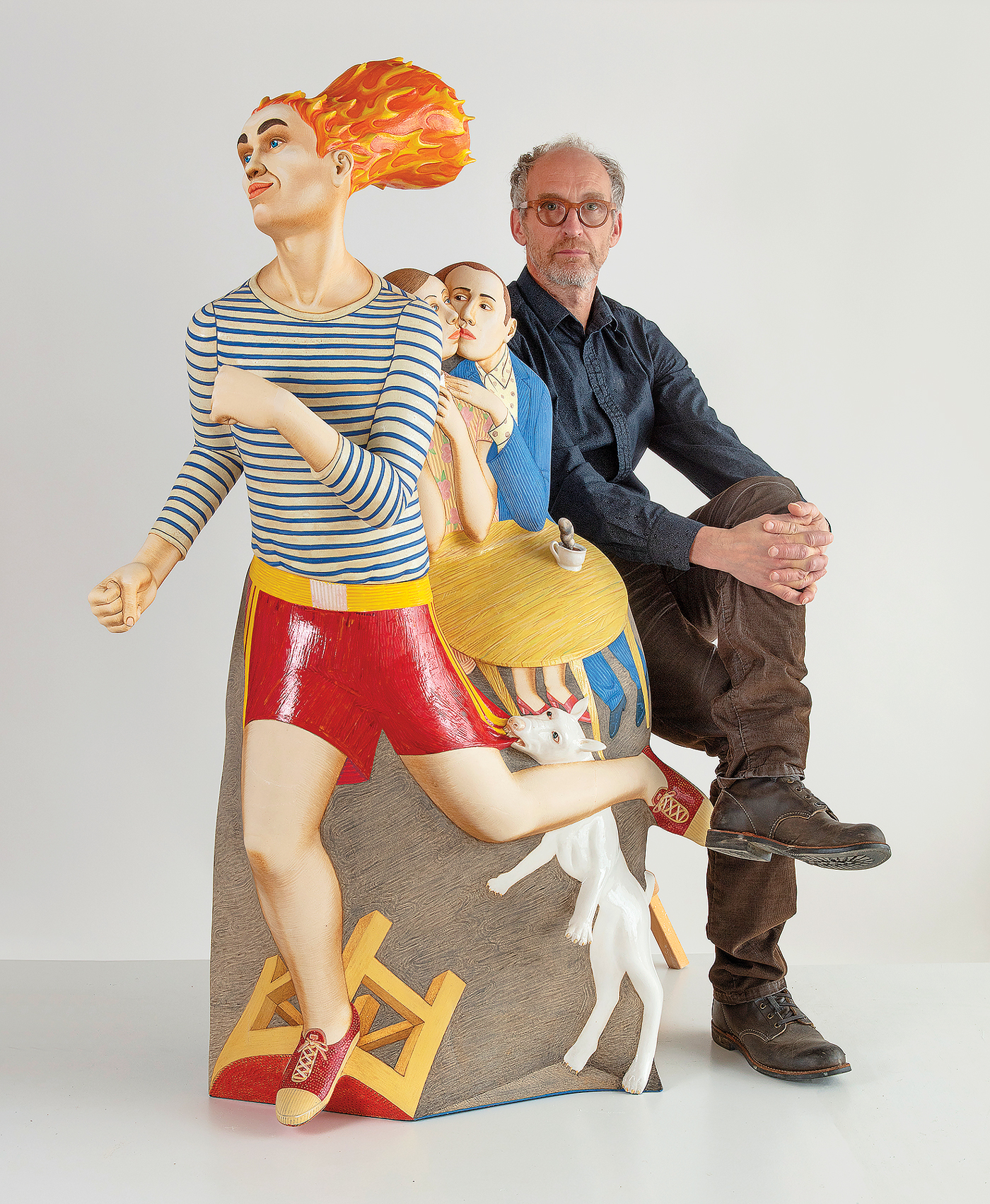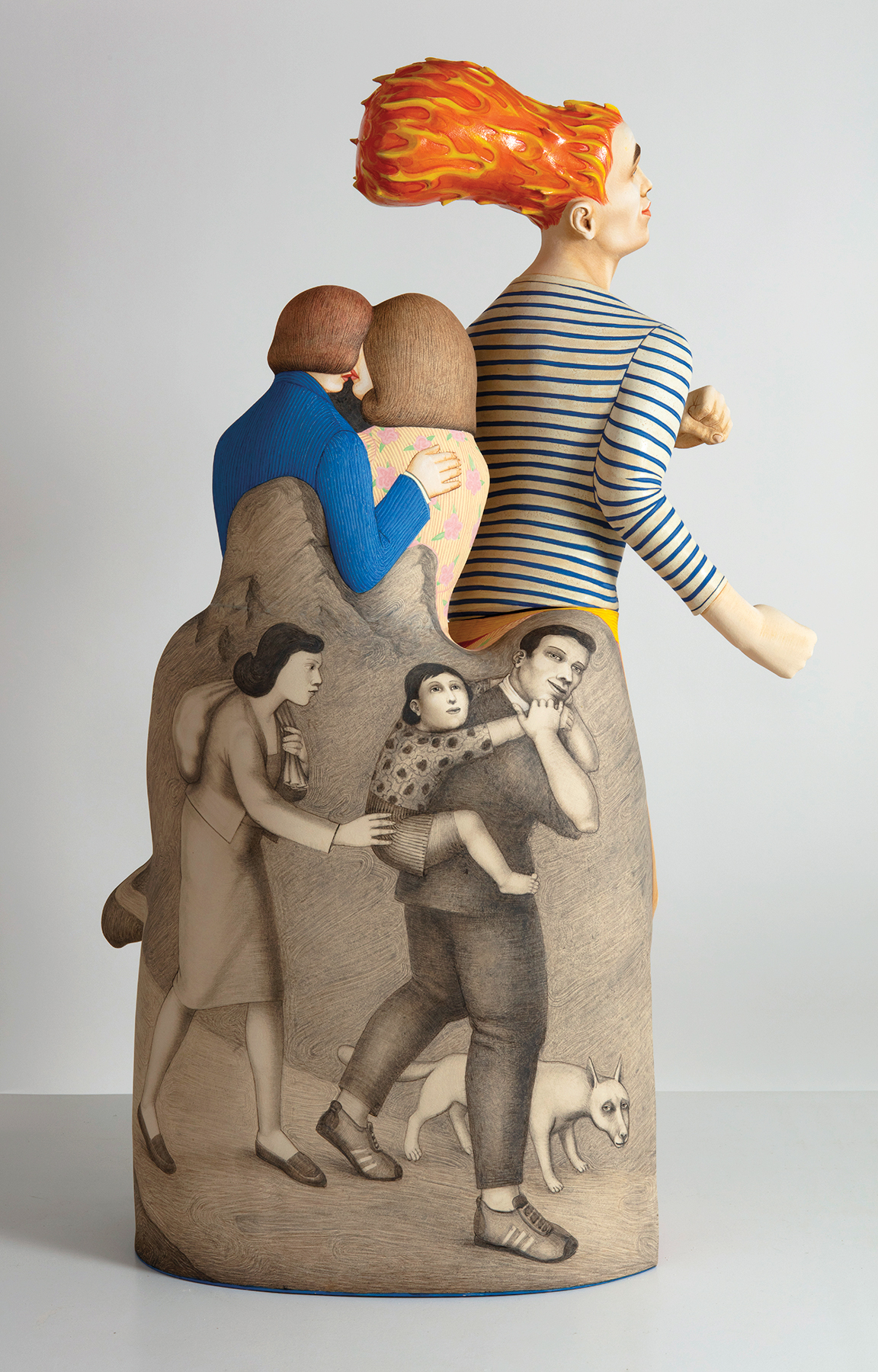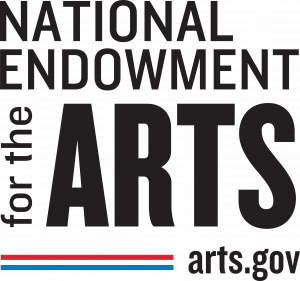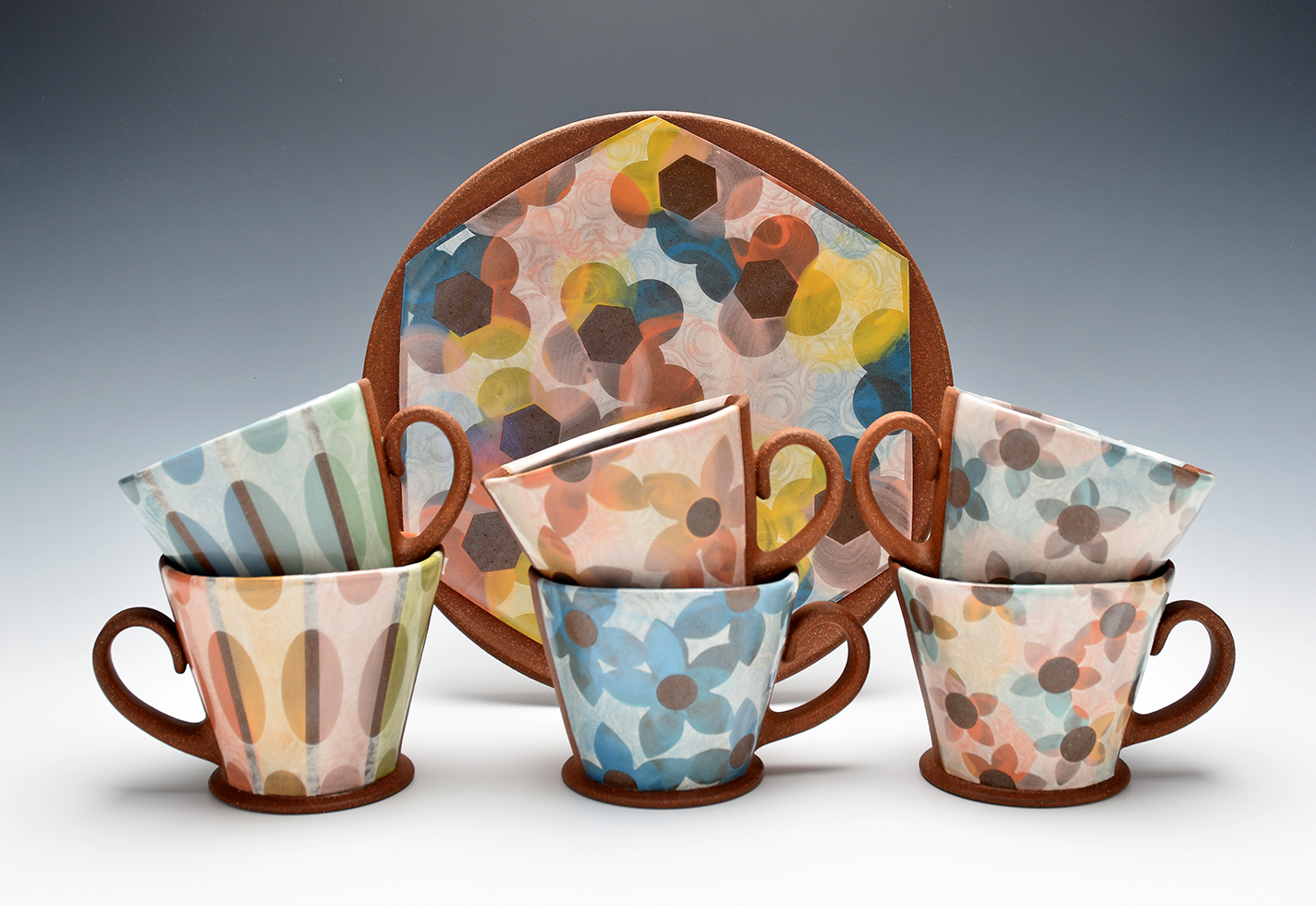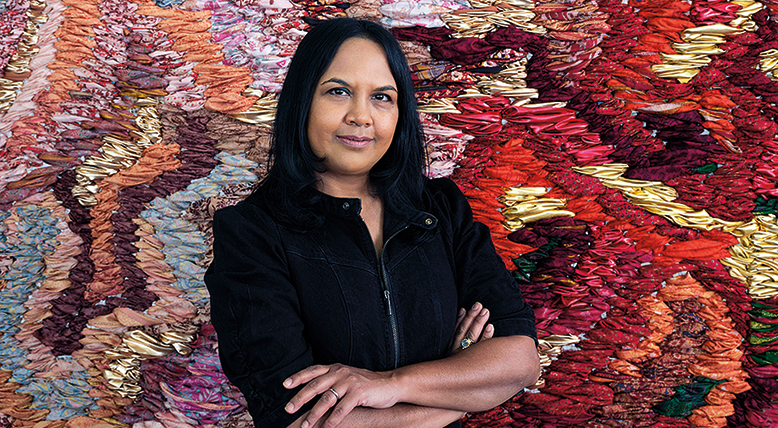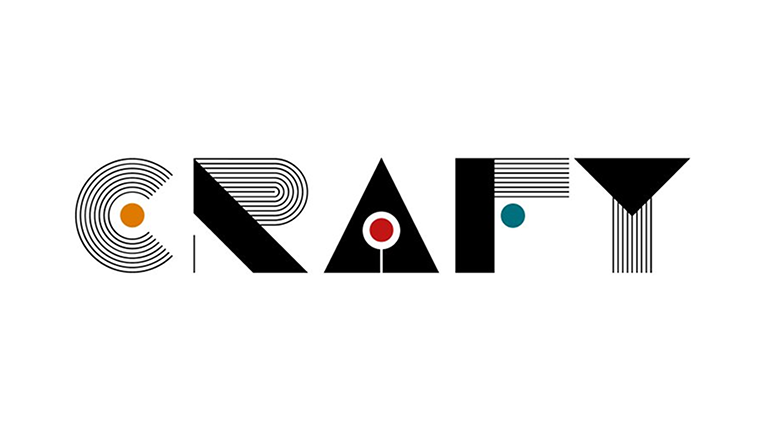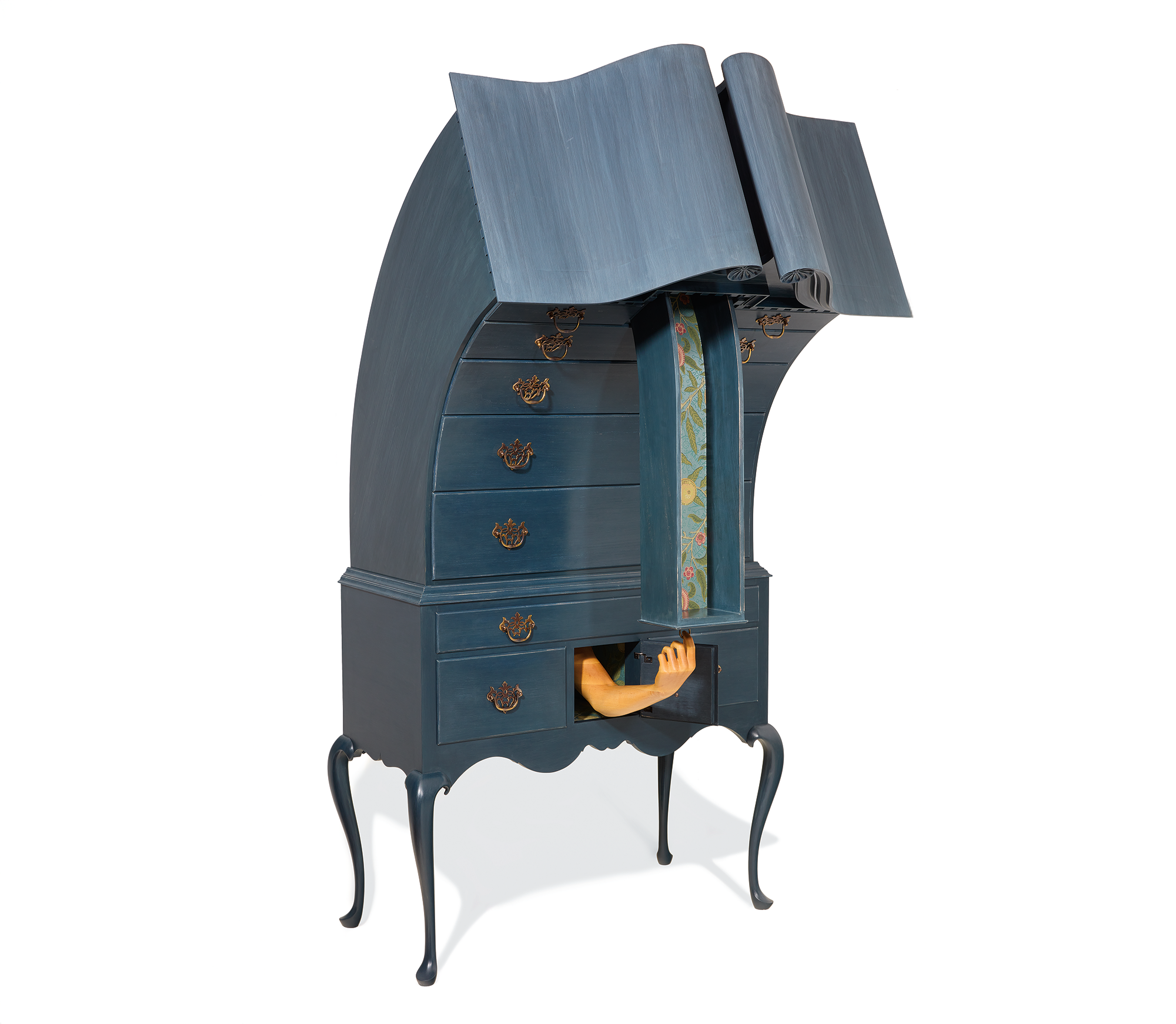When visitors to The Clay Studio in Philadelphia enter the Figuring Space exhibition, they’ll encounter a sort of community in clay—a gathering of life-size human figures. These diverse bodies are being created by 12 nationally and internationally prominent clay artists, all of whom use the figure to declare their personal, racial, and ethnic identities. Jonathan Christensen Caballero’s tribute to Mexican railroad workers in the American Midwest is titled Seeds of Tomorrow. In it, a pair of figures, wearing abstract forms on their heads that suggest Aztec headdresses, carry produce from their kitchen gardens. In Sergei Isupov’s image of dynamism and rest, a running woman with flying red hair is attached to a loving couple seated at a table. Kyungmin Park’s bust of a shouting, or crying, young girl sits on top of a pile of fruit, vegetables, and pastry that, in turn, rests upon the head of a man whose eyes are closed—in sleep?
For the two curators of the exhibition, Figuring Space is meant to be welcoming and unsettling at the same time. Jennifer Zwilling is curator and director of artistic programs at The Clay Studio. Kelli Morgan is a professor of visual and material studies and the inaugural director of curatorial studies at Tufts University. Together they worked to devise a show that, as they see it, will give visitors visual excitement and delight, and reflect the diversity of the South Kensington neighborhood, where The Clay Studio moved in April 2022. It will also provide jumping-off points for critical thinking about contemporary concerns.
“The exhibition grew out of Jen and I coming together and having conversations on the heels of all that happened in 2020,” says Morgan, who has served as an advisor to The Clay Studio in its strenuous efforts to forge connections with the South Kensington community and to further anti-racist and anti-colonialist curatorial practices. “We talked about the reckonings we were facing: climate change, COVID, post-Trump, and of course, the murders of George Floyd and Breonna Taylor, and how the body has always figured so prominently in these issues.”
The figures assert identity—Latinx, African American, Asian, female, and more—while in many cases also bearing witness to the suffering undergone by so many bodies in the course of our history. But the curators hope the show bears other messages as well.
There’s the matter of the medium. Clay is humble, used to make models for “heroic” representations of generals and statesmen (including Confederate ones) in bronze and stone. “We wanted to shift the paradigm of power from the marble or the bronze,” says Zwilling.
“The idea of twelve full-scale human sculptures in a room,” she adds, “basically all at eye level, so that you can enter this space and be surrounded by a community of figures representing different cultural backgrounds standing in the room together—this is what we wanted and needed to do as well.”
Figuring Space
The Clay Studio, Philadelphia
January 12–April 16, 2023
theclaystudio.org | @theclaystudiophl
Jon Spayde is a writer, editor, and performance artist in St. Paul, Minnesota.
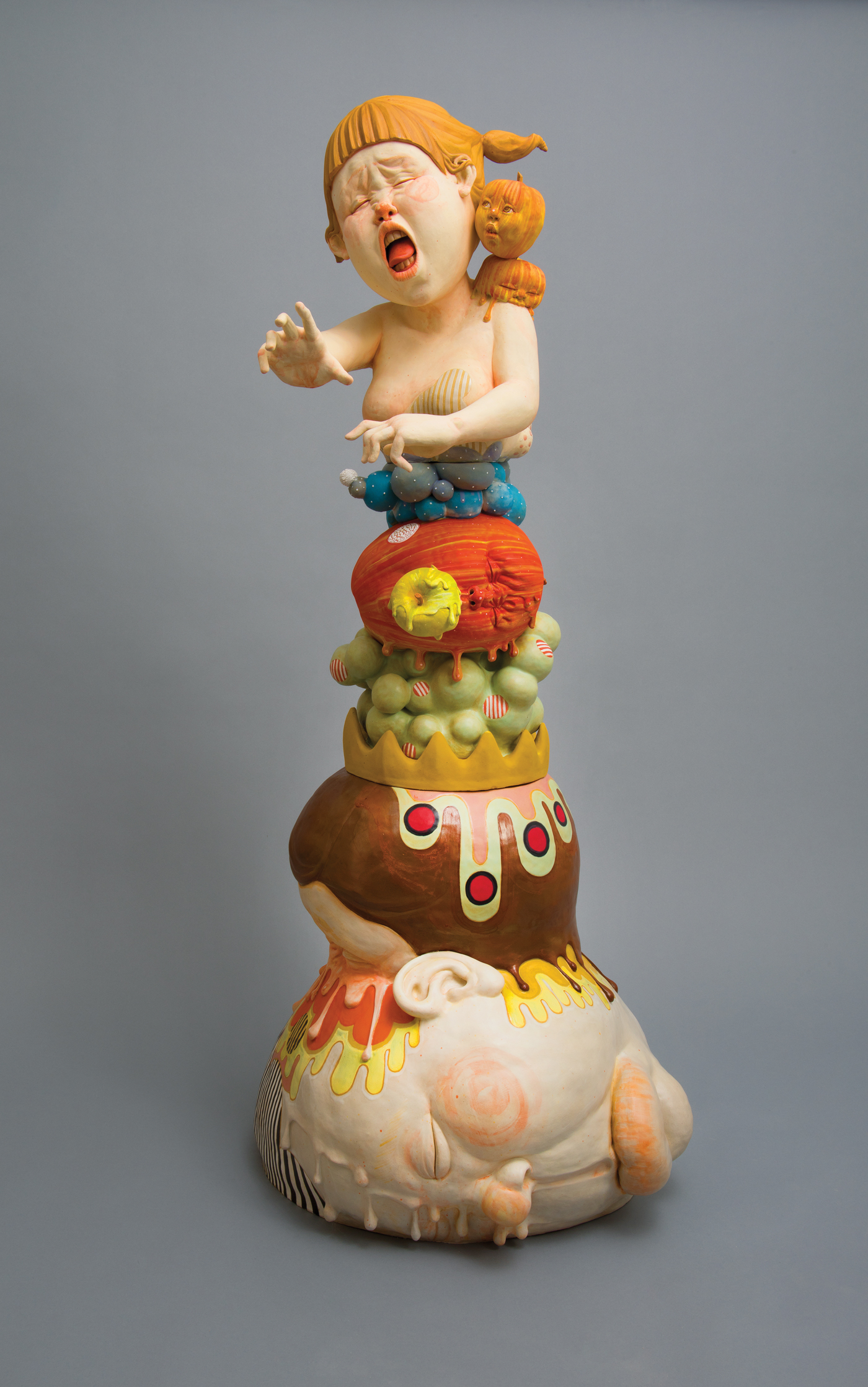
Kyungmin Park, How Have You Been?—Introspection, 2022, stoneware, glaze, gold luster, 54 x 24 x 21 in.

